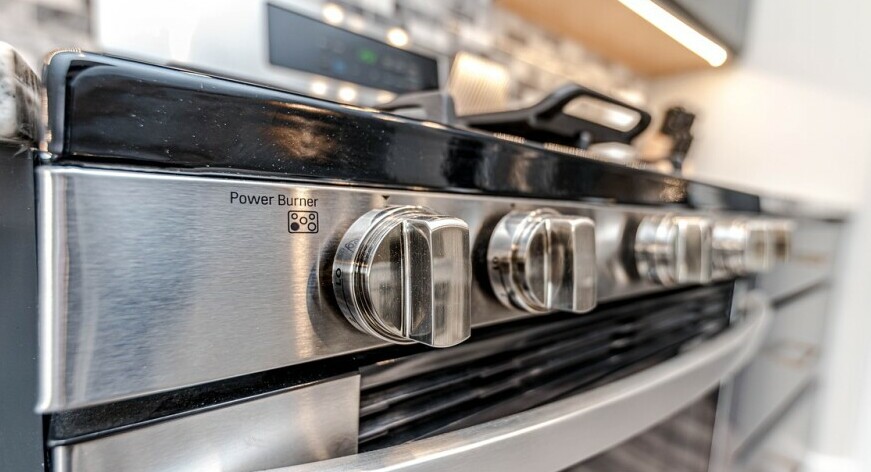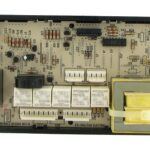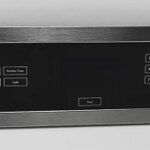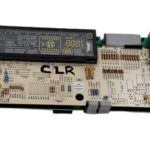
You own a “Frigidaire Gas Range“, a choice that speaks volumes about your desire for reliability and performance in the kitchen. It’s an appliance known for its robust functionality and enduring dependability. But – even the best of kitchen companions can have their off days. This guide is here to help you when your Frigidaire Gas Range doesn’t operate as expected.
Before we address potential issues, let’s get familiar with the gas range you’re working with. Your Frigidaire model boasts a variety of features designed to make cooking a breeze, from precise temperature controls to multiple burners for different cooking needs. Take a moment to ensure you understand each function; knowledge of your appliance is the first step towards effective troubleshooting.
Experiencing a problem can be frustrating, I understand. You might even feel a bit apprehensive about fiddling with a gas appliance. I’m here to walk you through the process safely and effectively.
However – it’s crucial to approach any troubleshooting with a safety-first mindset. Make sure the range is off, and the gas is not running before you start poking around. And, if you smell gas at any point, STOP IMMEDIATELY, avoid any sources of ignition, leave your home, and call your gas provider or a professional technician.
Now that we’ve covered the essentials, let’s move on to identifying common issues your range may encounter and the preliminary steps you should take to troubleshoot them responsibly. Remember, accurate diagnosis is half the battle won.
Common Issues and Initial Steps to Take
When you face a hiccup with your Frigidaire Gas Range, it’s natural to want it resolved quickly. Knowing the most common issues helps you approach the problem more efficiently. The top complaints usually include ignition troubles, inconsistent heating, and irregular flame sizes.
For any troubleshooting, your FIRST STEP should be to consult the user manual that came with your range. It’s tailored to your specific model and provides valuable information. If your manual is lost in the depths of your kitchen drawers, don’t worry. You can find a digital copy on Frigidaire’s official website by searching with your model number.
If an initial scan doesn’t surface a solution, don’t rush to disassemble anything just yet. Check simple solutions first: Are the power and gas supply on and functioning properly? Are the burners clean and free from debris? Is the control lock activated by mistake?
Always remember that while many minor issues can be fixed with a careful hand and a bit of patience, safety comes first. If at any point you feel uncertain or sense a gas leak, it’s crucial to step back and seek professional help immediately.
Upkeep can go a long way to prevent these common frustrations. Regular cleaning, ensuring the burners are properly aligned, and promptly addressing spills can help keep your Frigidaire Gas Range running smoothly. Let me show you how to tackle these problems one by one in the following section.
Common Frigidaire Gas Range Problems
- Igniter not sparking.
- Gas burner won’t light.
- Uneven heating in the oven.
- Oven not reaching desired temperature.
- Gas smell during operation.
- Control panel not responding.
- Oven door not closing properly.
- Burner flame too low or too high.
- Self-cleaning function not working.
- Clock or timer malfunctioning.
In-Depth Troubleshooting for Specific Problems
Your Frigidaire Gas Range is a reliable kitchen partner, but like all appliances, it may experience hiccups. If you’re facing issues beyond the basic hitches, let’s proceed with a thorough troubleshooting approach. Remember, safety first – ensure all controls are off and the range is cool before you start.
One of the most common issues is ignition trouble. If you try to turn on a burner and it won’t ignite, check to see if the burner cap is aligned and secure. Next, look for food debris or spillages that could be obstructing the burner or pilot light. A gentle cleaning with a soft brush may solve the problem.
Temperature irregularities can be perplexing. If you notice your gas range producing uneven heat, calibrating the oven’s thermostat could work wonders. Consult the user manual for specific calibration instructions, as this can vary by model.
Some problems seem daunting, such as dealing with a malfunctioning oven light or glitches in the self-cleaning feature. For a stubborn oven light, ensure the bulb is not loose and replace it if burned out. Self-cleaning issues often revolve around door lock mechanisms. Be sure the door is completely closed, and if the lock is engaged when it shouldn’t be, a reset by unplugging the range for a couple of minutes can help.
The scent of gas is a red flag. Should you detect a gas smell, don’t attempt to light any part of the range. Turn off the gas supply, ventilate the area, and contact a professional immediately. It’s crucial to deal with potential gas leaks immediately and with the utmost caution.
Step-by-Step Frigidaire Gas Range Troubleshooting Guide
- Check Range/Oven Igniter:
- Look for visible damage or wear.
- Ensure it sparks when igniting.
- Clean if dirty or clogged.
- Verify Gas Supply:
- Check gas valve is open.
- Confirm gas line isn’t blocked.
- Test other gas appliances for functionality.
- Inspect Burner:
- Clean burner ports from debris.
- Ensure burner cap is properly placed.
- Adjust burner flame if necessary.
- Test Oven Temperature:
- Use an oven thermometer for accuracy.
- Calibrate oven temperature if needed.
- Address Gas Smell:
- Ensure all gas connections are tight.
- Check for gas leaks using soapy water.
- Contact a professional if smell persists.
- Troubleshoot Control Panel:
- Check for error codes or indicators.
- Reset the control panel if possible.
- Ensure power supply is stable.
- Adjust Oven Door:
- Inspect hinges for damage.
- Clean door gasket and surfaces.
- Adjust door alignment if necessary.
- Monitor Self-Cleaning:
- Ensure oven is cool before starting.
- Verify door locks during cleaning cycle.
- Allow ample ventilation during and after cleaning.
- Test Clock and Timer:
- Reset clock if displaying inaccurately.
- Check timer settings for proper operation.
- Replace batteries if applicable.
- Seek Professional Assistance:
- If issues persist after troubleshooting.
- If unsure about gas or electrical components.
- Contact Frigidaire customer service or a certified technician.
Fix Frigidaire Gas Oven Not Heating
Watch now to troubleshoot and repair your gas stove effortlessly! Get your oven back to full heat in just a few easy steps.
Possible Damaged Parts of Frigidaire Gas Range
- Range Igniter
- Burner Caps
- Range Burner Grates
- Gas Control Valve
- Oven Igniter
- Oven Temperature Sensor
- Control Panel
- Oven Door Gasket
- Range Hinges
- Clock/Timer Display
Range/Oven Parts and Guides:
- Thermador Range Relay Control Board 16-10-660 00415618
- Frigidaire Oven Control Board 316272206
- Thermador Range Control Board 010-00157-02
- Oven Control Panel W10517896 W10617330 3023327 AP5787789
- Range Control Board 4453377 4451653 4452482 4453167 4453167R
Note: You can view more Range/Oven Parts here.
Seeking Professional Help and Maintenance Advice
There are instances where looking to a professional is more prudent than tackling the issue yourself. A well-versed technician can save you time and ensure your range operates safely and efficiently. Assess the complexity and risk associated with the problem, and don’t hesitate to call for help if the task is beyond your skill level.
Seek out a certified Frigidaire technician to handle serious gas range repairs. You can find one through Frigidaire’s customer service or search online for local appliance repair services with solid reputations. Always check reviews and verify credentials before making your choice.
Carrying out a routine checkup and maintenance can significantly extend your Frigidaire Gas Range’s life. Consistent cleaning, checking the gas line connections, and monitoring burner performance are just a few preventive measures you can take to avoid future issues.
Lastly, be aware of the warranty and support options available for your appliance. Frigidaire offers a standard warranty, but extra coverage may be available for purchase. Registering your product and understanding the warranty policy ensures you’re covered should any significant problems arise.






